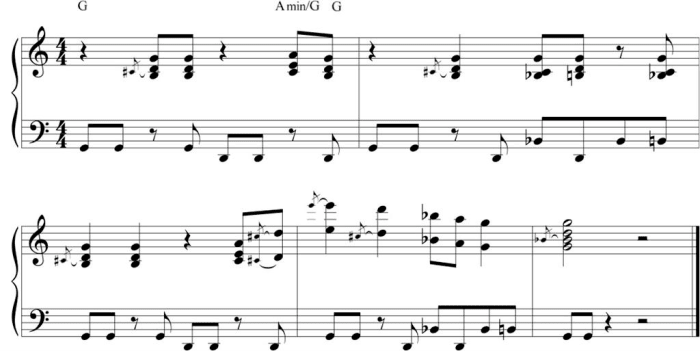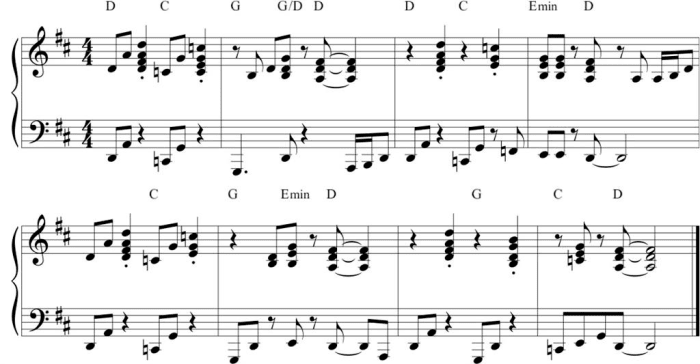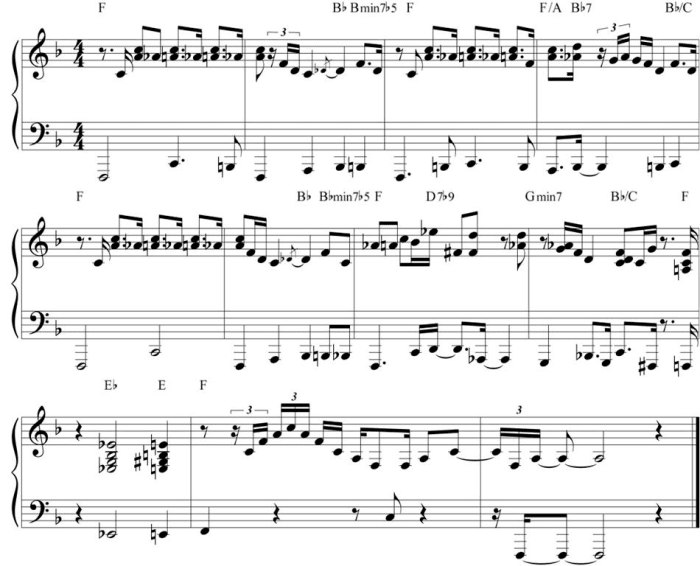5 Ways To Play Like New Orleans Piano Legend Allen Toussaint
A lesson from the October 2013 issue of KEYBOARD

Known equally for his masterful work as a pianist, composer, arranger, and producer since the early 1960s, Allen Toussaint’s talents grew out of the musical crucible of New Orleans. He quickly made a name as a tasty pianist who could also arrange and produce songs that became hit records. Along with his talent for crafting successful songs, Toussaint has lent his keyboard skills to artists like Paul McCartney, Dr. John, The Band, and countless others. Toussaint’s piano style can be broad, as he pulls from a wide reservoir of genres and influences. Here are five ways to play piano like Allen Toussaint.
1. Start from the Bottom

On many early 1960s New Orleans records by artists like Lee Dorsey, Chris Kenner, and Ernie K-Doe, Toussaint would devise a basic riff - often a simple root-fifth pattern on a vamped chord, as in Ex. 1. Then he’d add a small and clever turn to the phrase. Usually alongside a sparse drumbeat, these elements would form a bed that allowed nearly any melody or rhythm part to fit in without jumbling the mix.
2. Add Some Rhythm and Create a Hook

Ex. 2 demonstrates the basic bones for a Toussaint-style ’60s New Orleans pop arrangement, all on one piano. Check out how the right hand chords answer the bass line in a rolling way. Notice the Gospel flavor that the quick A minor chord provides on the fourth beat of the pattern before landing back on the G7 chord. Spice up the right hand pattern with a little chord syncopation and half-step togglingof thethird (Bb to natural) and fifth (C# to D) in the G7 (bar 2, starting on the third beat), and the groove is in place. Add a spritely horn-like riff with octaves, and a hook has been created.
3. The Riff Goes On

Ex. 3 is a funky device that Allen used to great success: a crispcall-and-response riff for two hands that can be a foundation for an entire song. It’s a two-bar riff of D, C, and G, with an E minor chord occasionally substituting for the G at the end of the riff. The left hand starts the first two notes of the riff with the root and fifth of each chord, and the right hand ends the third note of the riff with a stabbed chord. After repeating the riff three times, we change the chord sequence in bar 7 to D, G, C and then land “home” to D. By altering the chord sequences ever so slightly in different sections, the song retains its tonal center and funk spirit, yet never sounds like a boring one-chord jam.
Want all the hottest music and gear news, reviews, deals, features and more, direct to your inbox? Sign up here.
4. The Professor Is In

One can’t underestimate the influence of Professor Longhair on any musician from New Orleans. His spirit is very much alive in the work of Allen Toussaint, as seen in Ex. 4. Try mastering these rolling chord licks over the patient bass line. Take your time and make sure not to rush. Also try experimenting with arpeggiated endings like the one here.
5. Adding Richness with Instruments and Chord Choices


Toussaint achieves a full sound on his eclectic recordings with a minimum of instrumentation. He uses soulful harmonic choices and well-placed, vibey pads, like those played on Rhodes in Ex. 5 (note the two clickable files), which is written in the style of Toussaint’s mid-’70s “Southern Nights” period. Compositionally, this example features some intriguing impressionistic devices, including the opening chord change from C to Gaug5, followed by the descending C7, Bb7, and A7 arpeggiated chords, which help create a dreamy atmosphere. Also note Toussaint’s use of isolated bass figures with parallel harmony (bar 3, beat 3), and his penchant for Gospel chords (bars 5 and 6) with pedal chords and minimal bass root movement.
- Explore our pick of the best digital pianos